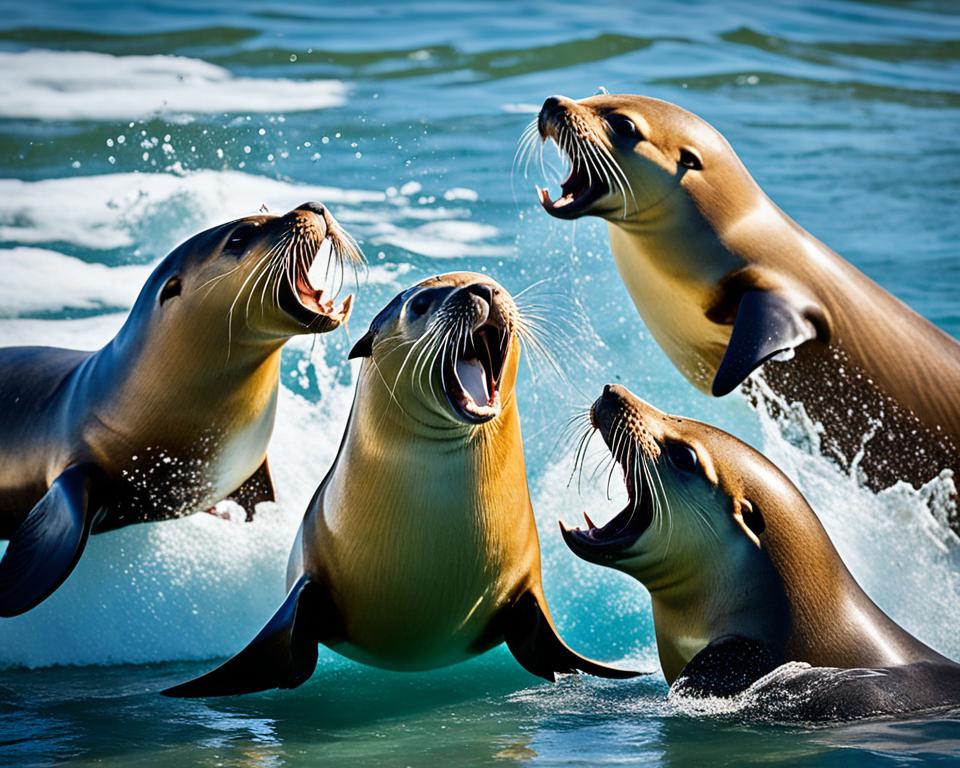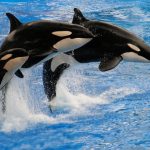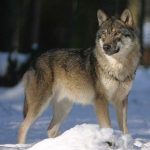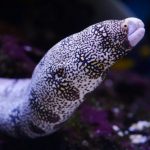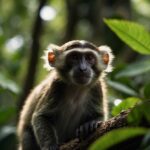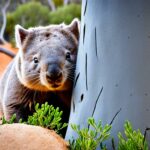Dive into the captivating world of marine mammals, and discover why the playful California sea lion, a member of the eared seals family, is as intriguing as it is charming. These sociable creatures are not just about their adorable looks; they pack a punch with behaviors and skills that make them stand out in the diverse tapestry of ocean life. Get ready to explore some truly amazing sea lion facts that showcase their unique place in the marine ecosystem.
Renowned for their roars and barks that resonate across the coastlines, California sea lions are as playful as they are vocal. Whether frolicking in the coastal waters of North America or basking on the sun-drenched beaches, these playful sea lions are an undeniably delightful sight. Join us as we unearth the charismatic and endearing nature of these fascinating animals that continue to enamor and inspire marine enthusiasts and casual beachgoers alike.
Understanding Sea Lions: Introduction to Their World
Embarking on a journey to understand pinnipeds leads us to one of the most iconic and well-recognized members of this group: the sea lion. These marine mammals are not only fascinating creatures but also embody the diversity of life that calls the ocean home. To fully appreciate the complexity of these animals, it is essential to delve into their pinniped classification, examine their distinguishing sea lion characteristics, and explore the vast distribution of sea lions across coastlines.
The Scientific Classification of Sea Lions
Sea lions belong to the kingdom Animalia and the phylum Chordata, indicating that they possess a backbone. Diving further into their taxonomy, we find them nestled within the class Mammalia, a group characterized by the nurturing of young through mother’s milk and the presence of body hair. Standing with distinction in the order Pinnipedia, they are closely related to the family Otariidae, which is easily recognized by the presence of external ear flaps and an ability that sets them apart on land – the aptitude to ambulate with ease. The genus Zalophus, particularly the Zalophus californianus species, captures the unique silhouette of sea lions.
Physical Attributes That Distinguish Sea Lions
The anatomy of sea lions is built for their semi-aquatic life, showcasing elongated foreflippers wrapped in a sleek coat of fur extending past the wrists. This feature is more than a fashion statement—it’s an adaptation that helps propel them in aquatic pursuits. Adulthood brings a pronounced sagittal crest to males, which starkly contrasts with the more subtle coloration and cranial silhouette of females and juvenile males. The males’ darker, often chocolate-brown pelts and significantly larger physique mark a clear sexual dimorphism within the species.
The Geography of Sea Lion Habitats
Sea lions have carved out habitats that range from the temperate waters of British Columbia to the warmer climes of northern Mexico. Preferring the rugged aesthetics of rocky and sandy beaches, they frequent coastal islands and mainland shorelines. These habitats support their colonial lifestyle, where they engage in social gatherings that are both complex and intimate. It’s here that sea lions congregate in numbers that can ascend into the thousands, painting a vivacious picture of marine mammal community life.
Now that we have skimmed the surface of sea lion biology and geography, we can appreciate the multitude of factors that make them a subject of both scientific and popular fascination. As we continue, we will swim deeper into the unique world of sea lions, exploring their behaviors, diet, and the conservation efforts that ensure they remain an integral part of our marine biodiversity.
Exploring the Mysteries of Sea Lion Communication
Diving into the auditory world of the sea lion reveals an intricate landscape of sea lion sounds that serve as a foundation for marine mammal communication. These vocalizations are not simply noises but a sophisticated language that orchestrates the social dynamics within a sea lion colony. Understanding their vocalization techniques provides insight into their behavior and their interactions with one another, both on land and in the undulating waves of their marine habitats.
The Vocal Powerhouse: How Sea Lions Roar
Central to the sea lion’s vocal repertoire is the iconic roar—a powerful sound that resonates across coastal habitats. The roar plays a critical role in territoriality and is predominantly used by males to assert their dominance within the colony. Mirroring the regal aura of their terrestrial namesake, these roars command attention and can determine the social standing among competing individuals. It is this vocal prowess that enables males to secure mates and protect their offspring from rivals.
Unique Vocalizations and Their Functions
But the communicative abilities of sea lions extend beyond the mighty roars of males. Mothers and pups partake in tender vocal exchanges, with each pair creating a unique acoustic signal that facilitates recognition amid crowded rookeries. A pup’s plaintive cry is often met with its mother’s distinctive trumpeting call, slicing through the cacophony of the colony until the two are united once more. These vocalization techniques underscore the breadth of sounds sea lions use to nourish kinship bonds and coordinate within the vast marine community.
- Roars for asserting dominance and territory
- Trumpeting calls for mother-pup reunification
- Barks and grunts to maintain group cohesion
Body language complements these vocal signatures, enhancing the clarity of messages and reinforcing social hierarchies. Together, these elements craft a complex mosaic of sound and motion indicative of a deeply social and intelligent species. As researchers continue to decode these vocalizations, the level of sophistication in marine mammal communication unfurls, revealing a society that is both interconnected and expressive.
A sea lion’s barking is not merely a sound, it’s a signal—an auditory handshake that can mean anything from a greeting to a warning.
Continued study and observation are key to decoding the role of these vocalizations in sea lion society, and with each new discovery comes a deeper appreciation for these masterful communicators of the sea.
The Diet of a Sea Lion: A Glimpse Into Their Culinary World
When you imagine a sea lion going about its day, it’s often seen gliding gracefully through the water or lounging lazily in the sun. However, beneath this leisurely exterior lies a skillful predator with marine feeding habits that reflect their carnivorous sea mammal status. Known for their diverse sea lion diet, these creatures are not picky eaters when it comes to their seafood selection.
Equipped with 34 to 38 robust and sharp teeth, a sea lion is adept at snatching up a variety of marine life that comprises their diet. They favor fishes, squid, and octopus, all of which are plentiful in their coastal habitats. In a harmonious blend of keen eyesight and tactile exploration, they employ their sensitive whiskers to detect meals among the reefs and seafloor.
Their predatory skills are not just for show; sea lions engage in regular feasts that underscore their carnivorous nature. With the ability to consume up to 40 pounds of food a day—sometimes amounting to 8% of their body weight—their appetites are nothing short of impressive. This feeding behavior is a testament to their role as crucial participants in the marine ecosystem.
Sea lions maintain their strength and agility through a hearty diet that dominates their daily routine—a true spectacle of nature’s relentless cycle.
- Sharp teeth for capturing fishes, squid, and octopus
- Whiskers that sift through the ocean’s floor for sustenance
- Able to eat up to 40 pounds or 8% of their body weight daily
In understanding the sea lion diet, we gain insight into these majestic creatures’ survival strategies and their integral place within the ocean’s food web. Observing their eating habits provides a closer look at the complex and dynamic world they navigate below the waves.
Navigating the Life Cycle of Sea Lions
The journey through the sea lion life cycle is a remarkable voyage from birth through maturity. Each stage of development reveals the intricate biological processes and social interactions that define the existence of these fascinating marine mammals.
From Birth to Maturity: Stages of Sea Lion Life
From the moment a sea lion pup is born, it enters a world where survival and growth are paramount. The initial stages of a sea lion’s life are characterized by significant physical and social milestones that culminate in their progression to adulthood. Let’s explore these stages, in particular their reproductive cycle, to understand how they evolve over time.
- Birth: The arrival of well-developed pups with open eyes and the capability to vocalize and swim shortly after being born.
- Infancy: Marked by a strong dependency on the mother for nutrition and protection.
- Juvenile: The stage where weaning occurs and pups start to forage and interact more independently.
- Adolescence: Sea lions continue to grow in size and strength, learning the complex social dynamics of their communities.
- Maturity: Achieved at around 4 to 5 years of age for both sexes, marking the start of their breeding capability.
Gestation and Nursing: A Mother’s Care
The extended gestational period of about 11 months, possibly including up to 3 months of delayed implantation, is followed by an intense period of nursing that forms the cornerstone of a sea lion pup’s early development. During this time, the mother’s care is unwavering as she balances foraging trips with the needs of her young. The maternity cycle is accentuated by the estral period, beginning roughly three weeks after the pup’s birth, which situates the cycle of nursing and weaning at the heart of the pup’s survival and growth.
| Stage | Description | Duration |
|---|---|---|
| Gestation | Includes a potential delayed implantation. | 11 months |
| Nursing | Pup’s primary source of nutrition. | 6 months to 1 year |
| Estral Period | Mother’s readiness for another reproductive cycle. | Starts ~3 weeks after birth |
| Weaning | Transition from milk to solid food. | Ends by 1 year |
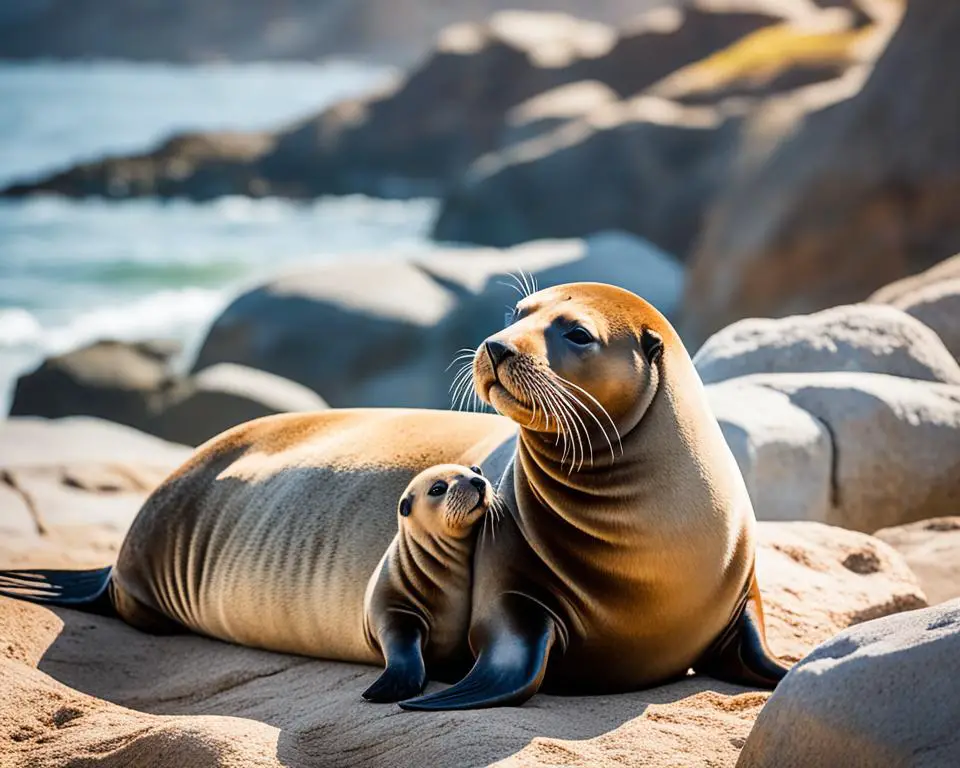
With a life span extending from 15 to 25 years, sea lions embody an evolutionary success story, where each stage of their life cycle plays a critical role. Beyond survival, these stages encompass the richness of their behavior, from the tender care of a mother to the robust independence of adulthood.
Adaptations for Survival: Sea Lions On Land and Sea
The resilience and versatility of sea lions are epitomized by their incredible sea lion adaptation mechanisms that are essential for marine mammal survival. These adaptations are meticulously designed by nature to facilitate a seamless transition between their land and aquatic lives, giving them a remarkable edge over other marine creatures. Below, we explore the physical features and behaviors that enable sea lions to thrive in both terrains, underscoring their impressive land and aquatic abilities.
Land Movement: How Sea Lions Maneuver Ashore
Upon setting foot on land, sea lions exhibit an extraordinary dexterity that belies their size. Thanks to evolution, their flippers are more than mere swimming tools; they can support their weight and allow for mobility on shore. The land abilities of sea lions are a result of their flipper structure, which is surprisingly similar to the human arm’s bone composition, and consists of a rotating hip bone that helps them maneuver their bodies with ease. Whether they are waddling towards a napping spot or chasing after a mate, these pinnipeds are remarkably agile on land.
Occurrences of sea lions ‘walking’ or even attempting to ‘run’ are not uncommon sights along the coastlines they inhabit. They can propel their large bodies effectively over sandy beaches and rocky terrains, an adaptation critical for accessing safe haul-out locations away from potential marine predators or to bask under the sun.
Underwater Prowess: Sea Lions in Their Aquatic Element
In the embrace of the sea, sea lion adaptation reaches another level of complexity. Propelling themselves through the water with amazing agility, their wing-like front flippers serve as powerful engines that drive them forward. The hind flippers, adept at delicate maneuvers, provide the necessary steering to navigate through the dynamic seascape. These aquatic abilities are not just for show — they play a critical role in everything from foraging to evading predators.
Remarkably, some species of sea lions have the capacity to dive deep and hold their breath for up to 20 minutes, allowing them to reach hunting grounds that other marine mammals cannot. Their underwater prowess is further highlighted by their ability to reach speeds of up to 25 miles per hour, rivaling even the most adept swimmers in the sea.
Together, these adaptations form a suite of traits that exemplify the sea lion’s mastery over both land and sea, making them a fascinating subject in the study of marine mammal survival. Their unique capabilities reflect the evolutionary triumphs of these engaging and intelligent animals, ensuring their continued presence in our planet’s diverse aquatic ecosystems.
California Sea Lion: A Profile
The California sea lion embodies a remarkable suite of physical features and behaviors that distinguish it from other members of the marine mammal community. As a vital part of marine mammal populations, it is pivotal that we examine the California sea lion traits that these creatures exhibit, as well as the species conservation status which keeps them thriving in their natural environments.
Defining Characteristics of the California Sea Lion
Belonging to the Otariidae family, California sea lions exhibit a noteworthy array of traits that make them both distinctive and fittingly adapted to their coastal way of life. Both male and female California sea lions share characteristics such as prominent external ear flaps, agile swimming abilities reaching speeds up to 25 miles per hour, and a long snout. However, the males sport a sagittal crest upon their heads and a darker brown fur, setting them apart not only from their female counterparts but from other marine mammals as well.
With their substantial necks and muscular build, they navigate the Pacific waters with precision and grace. Their adaptability to both sea and land environments is indicative of the complex eared seals family, to which they belong.
The Status of California Sea Lion Populations
The current wellbeing of the California sea lion populations mirrors the collective efforts put forth towards marine conservation. While the species conservation status under entities such as the International Union for Conservation of Nature (IUCN), the Convention on International Trade in Endangered Species of Wild Fauna and Flora (CITES), and the United States Fish and Wildlife Service (USFWS) does not list them as threatened, this does not diminish our responsibility towards them. Their populations, approximately 200,000 strong for the California subspecies, are testimony to the successful impact of protective measures like the U.S. Marine Mammal Protection Act of 1972.
The foresight of such conservation acts has been instrumental in maintaining stable population levels of California sea lions, ensuring their role within the rich tapestry of marine mammal populations remains secure. It is this ongoing dedication to their preservation that helps sustain the delicate balance within our oceanic ecosystems for current and future generations to vibrant enjoy marine life.
Unique Behaviors: The Social Lives of Sea Lions
Delving into the sea lion social behavior unveils a fascinating tapestry of interactions that shape life within their bustling coastal enclaves. The lives of these playful marine animals are characterized by complex societal structures and bonds that surpass mere survival, delving into a realm of social necessity and enrichment.
Group Dynamics and Hierarchy Within Colonies
Within the sea lion colonies, a pronounced colony hierarchy dictates the social interactions and group dynamics. Atop this hierarchy are the dominant males, commanding territories with formidable assertiveness, which they protect and maintain against rivals. This strict ordering ensures stability within the colonies, creating an environment conducive to mating and rearing young.
It’s not just about brute strength; social intelligence plays a key role as sea lions navigate their complex hierarchies. Juveniles and females form their own groups, often displaying bonds that hinge on collaboration and mutual assistance—a testament to the species’ inherent social nature.
The Role of Play and Interaction in Sea Lion Societies
Play is an integral part of sea lion societies, far beyond mere entertainment. Through their playful antics, sea lions learn essential life skills, forge alliances, and establish their place within the colony hierarchy. This behavior is often observed in ‘rafts’—groups of sea lions resting together near haul-out areas, illustrating the inherent value of social play among these playful marine animals.
Moments of play are interwoven with periods of rest, showcasing a fascinating blend of vigor and leisure that epitomizes the sea lion social behavior. The role of interaction is indisputable in fostering the well-being of the species, further accentuating their reputation as both intelligent and sociable creatures.
- Dominant males uphold colony order and breeding rights
- Females and juveniles engage in foraging and nurturing collaboratively
- Social play contributes to cognitive and physical development
- Rafts demonstrate the importance of group rest and bonding
Through continued observation and research, we gain a deeper appreciation of the complex social structures and interactions that govern sea lion social behavior. These rich behaviors not only serve functional aspects of survival but also highlight the joyous and spirited nature of sea lions—truly making them some of the ocean’s most endearing and playful marine animals.
Comparing Pinnipeds: What Makes Sea Lions Special?
When it comes to the marine mammal comparison, sea lions boast several distinct traits that highlight their sea lion uniqueness. Unlike their pinniped cousins the seals and walruses, sea lions have a remarkable facility for maneuvering on land. Let’s explore these pinniped differences and see just how special sea lions are in the aquatic animal kingdom.
Pinniped differences are most apparent in the way these animals move on land. Sea lions possess a unique ability among pinnipeds, using their strong and agile flippers to walk, or even run, on all fours. This contrasts sharply with the movement of seals, who must ‘galumph’—an awkward bouncing movement—due to their anatomy and lack of rotating hip bones.
Another striking difference lies in the ears. Sea lions are part of a subgroup known as ‘eared seals’, equipped with external ear flaps that are easily visible. This feature is absent in true seals, making it a simple yet effective way to tell these two apart at a glance. The presence of these ear flaps contributes to the sea lion uniqueness, both in appearance and in their enhanced auditory capabilities for social communication.
In terms of social dynamics, sea lions are particularly garrulous and socially interactive, using a variety of vocalizations to communicate with one another. Their colonies are bustling societies where members establish strong relationships through vocal and physical cues, showcasing a complex marine mammal comparison with the more solitary and silent nature of other pinnipeds.
| Characteristic | Sea Lions | Other Pinnipeds |
|---|---|---|
| Locomotion on Land | Can walk and run using all flippers | Galumph along or are less mobile |
| Ear Visibility | Visible external ear flaps | No external ear flaps |
| Social Behavior | Highly social, vocal | Less social, quieter |
The family of pinnipeds includes seven species, with sea lions being among the six extant species. Sadly, one species is now extinct, underscoring the importance of recognizing and preserving the unique traits and habitats of these marine mammals. The variety within the pinniped order illustrates a rich diversity, yet it is the unparalleled adaptations of sea lions that accentuate their special place within the marine world.
Understanding these characteristics not only enriches the human experience of observing these creatures but also underscores the necessity to protect their habitats and ensure their populations continue to thrive. The sea lion uniqueness offers an incredible glimpse into evolution and adaptation, compelling us to appreciate and safeguard these remarkable marine mammals for generations to come.
“Sea Puppy” Characteristics and Endearing Qualities
Coined from the undeniable resemblance to terrestrial pups, sea lions are often affectionately dubbed “sea puppies.” This moniker stems from their sea puppy traits, which draw parallels to the loyal and affectionate nature of a young dog. Beyond their charming appearance, sea lions exhibit behaviors that amplify their endearing status within the marine animal kingdom.
One of the most heartwarming sea puppy traits is the nurturing aspect of their social behavior. Female sea lions invest heavily in their offspring, nursing them with rich milk and protecting them with fierce devotion. This maternal care extends to the sea lion’s broader social structures, where they engage in community dynamics similar in complexity to a playful pack of pups.
Playful marine behavior is another hallmark of these endearing sea lions; from their rambunctious sea antics to their vocal barks and roars, their joyous disposition is evident. Just as puppies are known to play and explore, sea lions too are observed engaging in spirited interactions, both within their colonies and in their aquatic playground.
Like puppies of the sea, these mammals showcase social bonds through tactile interaction, games of chase, and an admirable curiosity about their surroundings.
Their adaptability across diverse marine territories speaks to the intelligence and remarkable character of endearing sea lions. Thriving in large, tightly-knit groups, sea lions communicate through an array of sounds and gestures, underscoring their intricate societal relationships. It is through these varied interactions that we get a window into the engaging and endearing sea lions way of life.
- Maternal care mirrors that of caring dog mothers
- Social structures rooted in familial and community bonds
- Vibrant and vocal communication methods
- Playful marine behavior fosters learning and social connection
In essence, sea lions possess a certain charisma that easily captures the hearts of those who observe them. Their behaviors, which emulate sea puppy traits, resonate with a sense of warmth and affability that is captivating to witness. These qualities not only enrich our understanding of marine mammals but also enhance our dedication to their conservation and well-being in the wild.
The Global Distribution of Sea Lions: Habitats Around the World
Sea lions boast a remarkable global distribution, occupying marine territories that span across hemispheres, from the southern coasts of Australia to the northern fringes of the Pacific. Their adaptability to a slew of environmental conditions is reflected in their presence around the world; however, one anomaly remains—their curious absence from the Northern Atlantic Ocean. Despite this, their widespread distribution in other regions showcases their ability to thrive in a variety of sea lion habitats.
These marine mammals prefer environments that offer both marine abundance and suitable resting areas. Ranging from the temperate shores of Mexico to the lush, tropical waters surrounding Pacific islands, sea lions have mastered the art of living in contrasting climate zones. Below is an overview of their distribution, signifying the breadth of sea lion habitats around the globe.
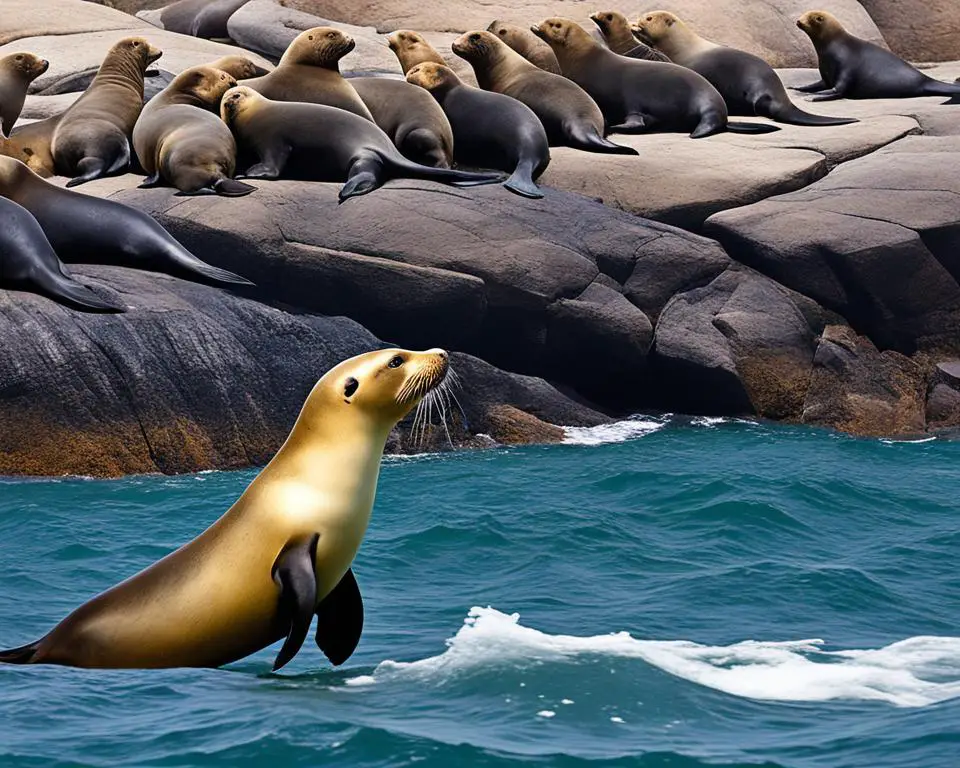
Sea lions cater to the call of diverse coastal ecosystems, solidifying their status as versatile citizens of the ocean.
| Region | Key Characteristics | Sea Lion Species |
|---|---|---|
| North America (Pacific Coast) | Temperate climates with rocky outcrops | California sea lion |
| South America (Galapagos Islands) | Tropical climates with sandy shores | Galapagos sea lion |
| Oceania (Southern Australia and New Zealand) | Cooler waters with abundant marine life | Australian and New Zealand sea lion |
| Southern Hemisphere (Various Sub-Antarctic Islands) | Remote, rugged islands with extreme weather conditions | Subantarctic fur seal |
Much of the global distribution and success of sea lions can be attributed to their incredible ability to exploit available resources in their marine territories. Their range is a testament to their ecological adaptability, from the chilly currents of the Northern Pacific to the more balmy waters closer to the equator.
An examination of the sea lion habitats enlightens us about the delicate balance these creatures maintain with their environment. Their roles as both predators and playful inhabitants of their domains are essential threads in the intricate web of marine life. As guardians of these environments, understanding and safeguarding these vast marine territories is vital for the continued global presence of these majestic marine mammals.
Human Impact and the Story of Sea Lion Conservation
The narrative of sea lion conservation is inextricably linked to human impact, an ongoing saga shaped by our actions and the laws instituted for the well-being of these marine species. A shift towards proactivity in marine legislation has marked a positive turn in the fortunes of sea lions, showcasing the power of informed policy in shaping the future of biodiversity in our oceans.
The Impact of Legislation on Sea Lion Survival
Legislation, such as the U.S. Marine Mammal Protection Act, has been instrumental in halting the rapid decline of sea lion populations. By curtailing human practices that led to their dire straits, such as unsustainable hunting and habitat disruption, this marine legislation has laid the groundwork for the recovery and continued survival of sea lions. The act has not only directly affected sea lion colonies by ensuring their safety from direct harm but has also indirectly promoted a healthier marine ecosystem upon which they depend.
Conservation Efforts and their Effects
Conservation efforts for sea lions have extended beyond the scope of legislation, delving into the realms of habitat preservation, scientific research, and public education. Awareness campaigns have encouraged responsible interaction with these creatures, while research initiatives have provided valuable insights into the complex dynamics of sea lion populations and their interplay with the marine environment.
| Conservation Effort | Impact on Sea Lions |
|---|---|
| Habitat Protection | Ensures safe breeding grounds and reduces disturbances from human activities |
| Research and Monitoring | Leads to data-driven approaches for managing populations and health concerns |
| Public Education | Raises awareness about the importance of sea lions to ecosystems and human responsibilities towards their welfare |
| Legislation Enforcement | Prevents illegal hunting and promotes sustainable fisheries, reducing competition and unintentional catch (bycatch) of sea lions |
With continued dedication, the synergy of these efforts forms a formidable shield for sea lion conservation, solidifying not only the security of sea lion populations but also underscoring the resilience that can be fostered through human care and respect for the natural world.
The Mighty Hunters: Sea Lions and Their Prey
Remarkable adaptability and keen predatory skills define the sea lion as one of the ocean’s proficient hunters. Sea lion hunting strategies have evolved to cater to the rich prey diversity in their marine habitats, showcasing the sea lion’s impressive ability to adjust to various ecological niches. With penchant for a varied diet, they have honed distinct foraging techniques to thrive in the wild.
Their dietary spectrum is as broad as the ocean itself, stretching from the swiftness of fish to the camouflaged cephalopods like squid and octopus. Not just constrained to the agile and the soft-bodied, sea lions also indulge in the crunchiness of crustaceans, proving their gastronomic versatility.
Given the challenge posed by speedy fish like tuna, certain species of sea lions, such as the Galapagos sea lions, have developed collaborative efforts to hunt. These remarkable sea lion hunting strategies involve herding their prey toward the shallows, transforming the open waters into a sort of aquatic pantry accessible to the community.
Sea lions display a blend of intellect and power when hunting, tailoring their approach to the prey on offer to maximize their success rate in the feeding grounds.
Let’s delve into the specifics of these foraging techniques with a glance at how different sea lion species exploit the bounty of the sea:
| Prey Type | Hunting Strategy | Sea Lion Species |
|---|---|---|
| Fish | High-speed chases and cornering in shoals | California Sea Lion |
| Squid/Octopus | Deep dives and suction feeding | Galapagos Sea Lion |
| Crustaceans | Foraging on the seafloor and cracking with teeth | Australian Sea Lion |
These sophisticated foraging techniques are not merely instinctual but a matter of learning and practice, ensuring sea lions remain top predators within their domains. The prey diversity found in their locales demands a high level of foraging intelligence, which these marine mammals possess in abundance, allowing them to navigate the intricacies of their dietary needs with finesse.
As we continue to explore the intricate lives of sea lions, their role as crucial predators in the marine food web becomes ever more apparent. It is through studying their foraging techniques and hunting strategies that we gain a greater understanding of the ecological intricacies of our oceans.
Revealing the Mysteries of Sea Lion Longevity
The sea lion lifespan is a subject of fascination for marine biologists and enthusiasts alike. Understanding how these aging marine mammals navigate the passage of time in their aquatic world sheds light on the lifespan factors that contribute to their longevity. Let’s dive into the known variables that influence how long these captivating creatures inhabit our oceans.
Factors Contributing to Sea Lion Lifespan
The longevity of sea lions is shaped by a myriad of elements, ranging from genetic predisposition to environmental influences. Notable amongst these lifespan factors are species-specific traits, the condition of their habitat, and their diet. Predation pressure and human activities also play significant roles in either curtailing or fostering the potential for a full life. Healthy marine ecosystems, free from excessive pollutants and hazards, are cornerstone habitats that support the robustness and vitality required for sea lions to thrive.
Age-Related Challenges Faced by Sea Lions
As with many aging marine mammals, sea lions are not exempt from the wear-and-tear of time. As they advance in years, these lively mammals encounter health challenges akin to those found in humans. This includes susceptibility to diseases such as pneumonia, epilepsy, and even cancer. Moreover, the survival strategies of dominantly established males, who may remain ashore for extended periods to defend their territories, highlight the enduring nature and resilience of these creatures. Conversely, female sea lions often take temporary leave from the water presence to rear their young, offering a nurturing environment critical for the offspring’s survival—a key factor to the longevity of the species.
The collective understanding of these aging marine mammals provides invaluable insights into the preservation and future study of sea lions, ensuring that our oceans continue to echo with their barks for years to come. Grasping the complexities behind the sea lion lifespan takes us a step closer to protecting these majestic entities of the sea.
Sea Lions in Popular Culture and Media
Throughout the years, sea lion representation in popular culture and media has played a significant role in highlighting their intelligence and endearing qualities. Immortalized in a variety of forms ranging from animated characters to symbols of beachside fun, sea lions have captured the hearts of the public worldwide. The cultural influence of these marine animals is undeniable as they continue to serve as ambassadors of ocean life, leading to an enhanced awareness and appreciation of their species.
By showcasing their natural agility and playful personalities, sea lions have become a staple in media portrayal, from television documentaries to live stage performances in marine parks. Such exposure has not only entertained but also educated audiences about the sea lion’s habitat, behavior, and the conservation challenges they face. This visibility underscores the importance of their portrayal as an integral aspect of promoting marine conservation.
Real-life encounters at marine theme parks catalyze this media portrayal by allowing guests to observe sea lions’ behaviors up close. These interactive experiences engender a genuine connection between humans and sea lions, bridging the gap between nature and education.
| Media Platform | Description of Sea Lion Representation | Impact on Public Perception |
|---|---|---|
| Film & Television | Sea lions featured as intelligent and personable characters | Increases affinity and empathy towards sea lions |
| Marine Park Shows | Live demonstrations of sea lion agility and learning capabilities | Highlights the need for conservation and respect for marine life |
| Scientific Documentaries | In-depth exploration of sea lion behavior and ecosystems | Enhances understanding of sea lions’ role in marine biodiversity |
Through cinematic narratives and memorable advertising campaigns, sea lions have come to symbolize the playful spirit and intrinsic value of marine ecosystems. This reinforces the need for a sustained cultural influence that supports marine stewardship and the continued existence of these charismatic animals. It is through ongoing media portrayal and meaningful sea lion representation that a broader understanding and support for marine life can be fostered.
- Influences positive public attitudes and actions towards marine conservation
- Spotlights the intelligence and charm of sea lions, leading to attitudinal changes
- Strengthens the bond between humans and the marine environment through relatable storytelling
As storytellers, educators, and conservationists continue to unveil the world of sea lions on various platforms, we can anticipate a growing awareness and protection of these wonderful creatures. The power of cultural influence stands as a testament to the role that media plays in shaping perceptions, driving conservation efforts, and securing a future where sea lions remain a beloved and thriving presence in the natural world.
Conclusion
In the undulating waters of our oceans and along the bustling coastlines, sea lions continue to enchant us with their multifaceted existence. A deep dive into their world reveals a treasure trove of knowledge that underscores the importance of marine mammal protection and sea lion education. These intelligent and gregarious animals have shown us that there is much to admire and many ways they contribute to the ecological balance of marine life. As we wrap up our exploration, it is clear that the continued appreciation for sea lions grows stronger with every splash and every bark that reaches our ears.
Key Takeaways About Sea Lions
Sea lions offer an exceptional display of adaptability, whether they are navigating the crashing waves or lounging on sunlit shores. Their complex social structures reflect an intricate society where every roar and bark strengthens the bond within their communities. Through responsible practices and effective marine mammal protection measures, we ensure that these playful pinnipeds can continue to thrive in their natural habitats. Their role as a keystone species in marine ecosystems is an essential thread in the fabric of our ocean’s biodiversity.
Continuing the Journey of Learning and Appreciation
The journey toward understanding and safeguarding sea lions is far from over. Our shared responsibility in nurturing sea lion education is key to preserving these creatures for generations to come. Each effort, from individual actions to global conservation strategies, contributes to the welfare of sea lions and the health of marine ecosystems. It is through this continued appreciation and devotion to learning that we can hope to coexist harmoniously with these fascinating animals and the myriad of life beneath the waves.

